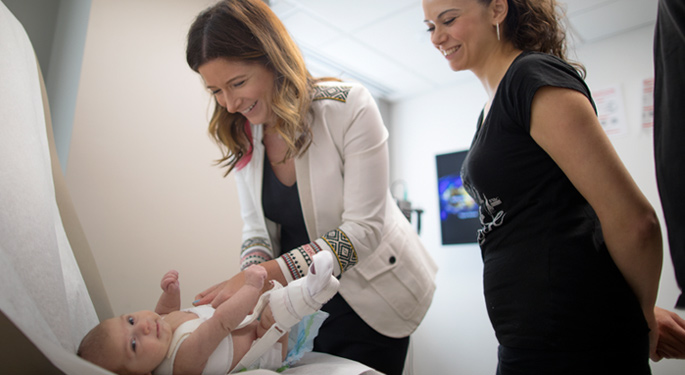Pediatric Orthopedics

Pediatric orthopedics
A child’s musculoskeletal problems are different from those of an adult. Because children are still growing, the body’s response to injuries, infections, and deformities may be quite different than what would be seen in a full-grown person.
Sometimes, what is thought to be a problem in a child is just a variation of growth that will resolve with time. A good example of this is intoeing in a toddler. Some of the problems children have with their bones and joints that are due to growth do not even occur in adults. In addition, the evaluation and treatment of a child is usually quite different than for an adult — even for the same problem.
Children with complex pediatric problems are best managed by a medical-surgical team approach. Pediatric orthopaedic surgeons diagnose, treat, and manage children’s musculoskeletal problems, such as:
- Limb and spine deformities noted at birth or later in life (clubfoot, scoliosis, limb length differences)
- Gait abnormalities (limping)
- Broken bones
- Bone or joint infections and tumors


Pediatric orthopaedic surgeons: Specialty care for children
Children are not just small adults. They cannot always say what is bothering them, or answer medical questions, or be patient and cooperative during a medical examination. Pediatric orthopaedic surgeons know how to examine and treat children in a way that helps them to be relaxed and cooperative.
They also appreciate the worry that goes with having a child with a musculoskeletal problem and they have experience in communicating with anxious family members.
Most pediatric orthopaedic surgeons’ offices are arranged and decorated with children in mind. Specially designed equipment, available toys, videos, and reading materials all help to create a comfortable and nonthreatening environment for the child.
